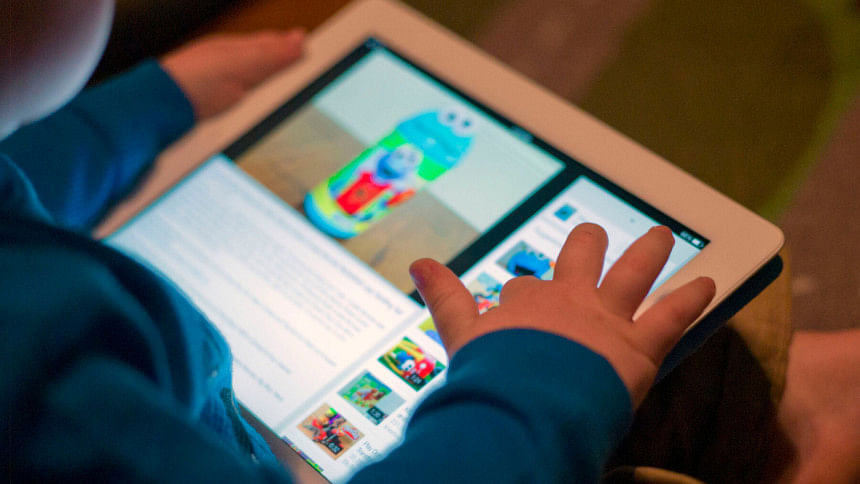From ‘mama’ to mute: The silent effect of screens on early speech development

"He doesn't say 'Mama' yet, but he can unlock my phone." This statement has become increasingly common in therapy centres and among worried parents. A silent concern is growing: Why isn't my child talking?
Behind these questions, one digital culprit is gaining attention—screen time. While screens offer convenience, especially for busy families, their increasing presence in early childhood may be casting a shadow on speech development.
Recent studies highlight the link between screen exposure and speech delays. The Canadian Paediatric Society notes that higher levels of screen time in infancy are tied to weaker language skills at ages 3 to 4. A 2021 pilot study by the Institute for Paediatric Neurodisorder and Autism (IPNA) in Dhaka found that nearly 30% of children with speech delays had a history of excessive screen exposure—more than 3 hours daily.
The first five years are a critical window for speech and language development, which depend on interaction, imitation, and responsive communication. When these are replaced by passive screen viewing, children miss key opportunities to learn words, express emotions, and build the foundation of language. The concern is no longer isolated—it's becoming a public health issue.
A child's brain in early years acts like a sponge, absorbing sounds, expressions, and emotional cues. But passive screen use—where there is no back-and-forth interaction—can disrupt this process. A 2020 study in Paediatrics found that high screen exposure was linked to reduced brain activity in regions responsible for language processing and emotional engagement. The less children hear real voices, the harder it becomes for their brains to wire for speech—especially in children under two, whose language networks are still forming.
The American Academy of Paediatrics warns that lack of face-to-face interaction during this sensitive period can hinder vocabulary, sentence formation, and overall communication. When screens become the main source of engagement, developmental milestones may be delayed.
In today's world, avoiding screens is difficult. But there are evidence-based strategies that can help. The World Health Organisation recommends no screen exposure for children under two and a maximum of one hour per day of supervised, high-quality content for ages two to five.
More importantly, it is the quality of interaction that matters. Activities like storytelling, reading, singing, and symbolic play stimulate brain areas essential for speech. Carers can also practise "serve-and-return" interactions—responding to a child's gestures or sounds to encourage communication.
Creating screen-free routines during meals, commutes, and bedtime reintroduces valuable moments for bonding. Modeling healthy screen habits at home also reinforces a balanced approach to digital media.
Technology can enhance learning when used wisely, but it cannot replace human connection. By being present, talking, and listening, carers lay the foundation for confident communication.
In a world full of digital noise, children still need one thing most: real voices, real faces, and real connection. Their first "Mama" or "Baba" is too precious to miss. Before handing them a screen, let's offer them our words instead.
The writer is a student of the Department of Communication Disorders at the University of Dhaka. Email: [email protected]

 For all latest news, follow The Daily Star's Google News channel.
For all latest news, follow The Daily Star's Google News channel. 



Comments